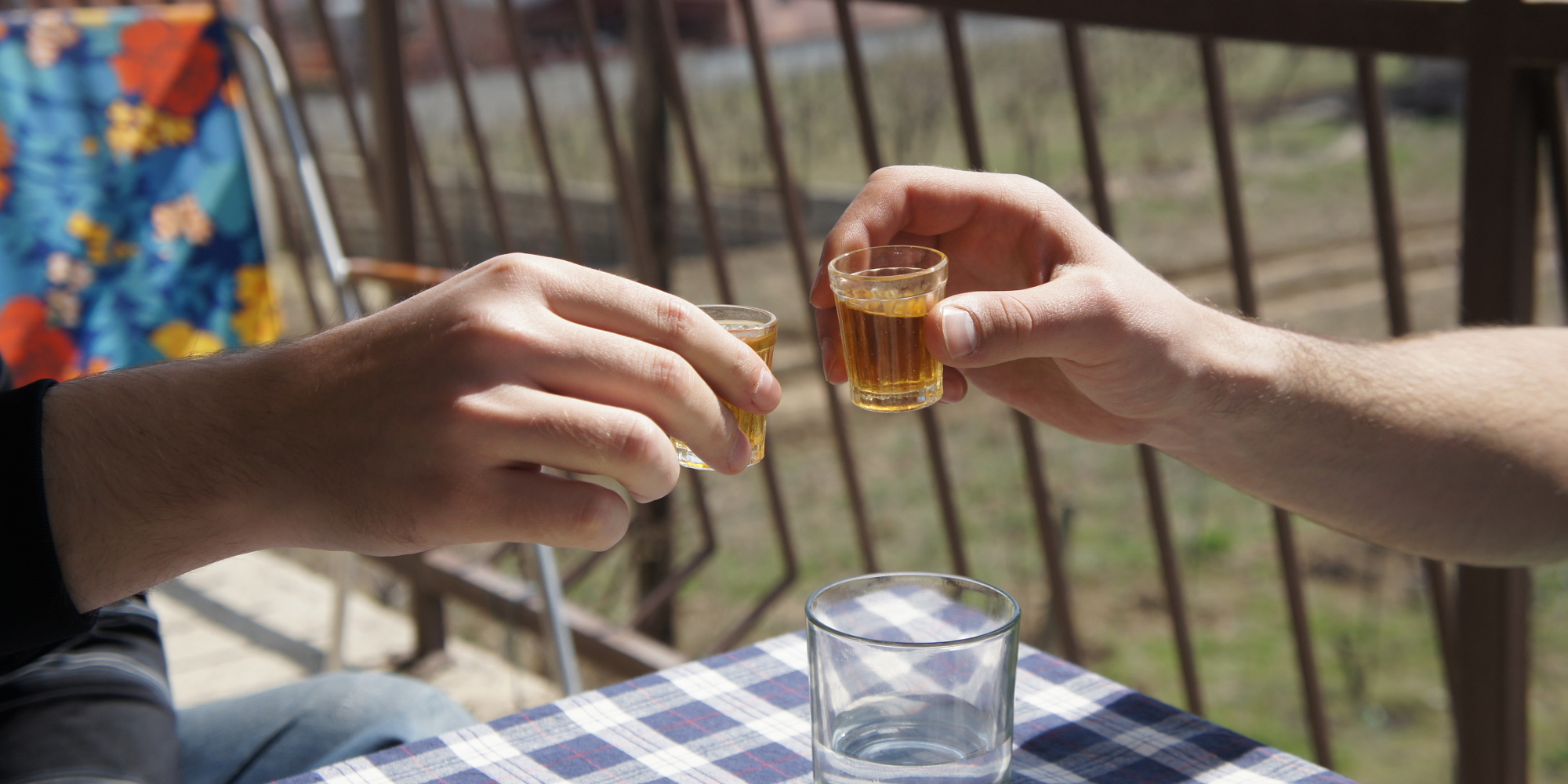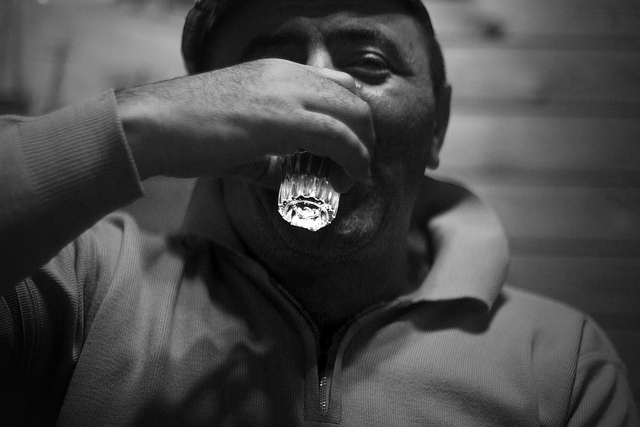
Here’s what you need to know about the country’s most famous liquor.
The 10 commandments of rakia
Music festivals usually go hand in hand with watery lagers in plastic cups that one sips while bouncing in front of the stage (or more likely, spilling half of it). To improve their mood and boost their dance moves, some go for shots between two performances. If the festival happens to be in Croatia – or you’re simply around Croatia or its neighbouring countries – chances are that the shots you’re imbibing are rakia.
Kudos, ladies and gentlemen! It’s a local drink you’d want to experience during your trip. Not just an alcoholic drink – really, you’re infusing your veins with a part of the gastronomical heritage, a tradition, a lifestyle that has the benefit of making your blood rush up and warm your cheeks. Anthony Bourdain would surely approve.
Rakia is the national drink of (almost) every Balkan country, made from the distillation of fermented fruit. It can be made out of almost any fruit, and depending on the variety, its colour and flavour change. Its strength also changes depending on the distillation process and fruit added, with the alcohol content ranging from approximately 40 to 65 percent.

Šljivovica [shlivovitza], the combination of rakia with plums, is probably the most common and popular variety of rakia. There are other varieties that you might want to add to your “alcohol for beginners” vocabulary. Travarica [travaritza], made of herbs. Dunja [dunia], rakia with quinces. Višnjevaća [vishnievatcha] or višnja [vishnia], the variety with sour cherries. Medica, made with honey.
Rare are the foreigners who pronounce these name correctly at first. But you’ll be forgiven, as long as you display the knowledge of essential rakia drinking etiquette. Here’s a eight short commandments for inexperienced rakia drinkers.
1. Thou shalt not compare brandy, German schnapps, Italian grappa, French eau-de-vie, or whatever strong spirits you might have in your country, with rakia.
This would just be a serious breach of social etiquette.
2. Thou shalt not drink rakia on an empty/overstuffed stomach.
This is a no-brainer when it comes to most alcohol, but fruity rakia is perfidiously strong, and can knock out even experienced drinkers.
3. Thou shalt not question the medical qualities of rakia.
This one is related to the first commandment. Here we’re told since childhood that rakia has medicinal benefits. Did you cut yourself? Treat the cut with some rakia. Stomach ache? Rakia is the cure. You need something to reduce a fever, calm a toothache, kill germs? You need rakia, of course. You might want to grab a bottle of rakia as a souvenir to replace pills in your medicine cabinet.
4. Thou shalt not commence your night of drinking with šljivovica.
There’s a catchy expression – I have no idea who coined it – that goes “you don’t need cola, you don’t need pizza, all you need is šljivovica!” However, you might not want your first rakia ever to be šljivovica. It’s a strong one, so I strongly advise to try out some lighter varieties first, such as the honey one (medica), the quince one (dunja) or the cherry one (višnjevaća).

5. Thou shalt not refuse rakia when invited to somebody’s house.
Rarely will you be invited into someone’s house without being asked to partake in an alcoholic beverage – very often it will be rakia. It often starts meals as an aperitif, acts as a digestive, and also fixes social awkwardness and cements friendships. When somebody offers you a glass of rakia, it isn’t necessarily an invitation to get drunk, but more a token of friendship, a sign they want you to feel comfortable and welcomed.
6. Thou shalt not treat rakia as other spirits and try to mix it with sodas.
This is how one separates a newbie from an experienced rakia drinker. Rakia is not to be treated as vodka, gin, whiskey and so on, so don’t mix it with sodas or other drinks. Above all, it tastes awful. Also, no, you definitely shouldn’t lick salt before or – especially – after drinking it.
7. Thou shalt not binge on rakia.
Not that it isn’t appropriate – just not in social circles. Rakia is for tasting, toasting, getting you into a cheerful mood without making you sick. Treat it like a treat.
8. Thou shalt drink it bottoms up (mostly).
When invited for a rakia toast, raise your glass and down it all in one gulp. This is also the rule when you’re drinking rakia between beers, for instance. The exception to the rule is when you drink rakia with friends in a bar, as the main drink. Then you’d maybe want to opt for a slower drinking, accompanied by a glass of water.
9. Thou shalt know what to say.
And while you’re enjoying your rakia, wherever you are, do try to say cheers in the local language. In Croatian, clinking glasses is accompanied by “Živjeli!” [zhivyelee] or, alternatively, “U zdravlje!” [ooh zdravlye].
10. Thou shalt always, always drink with moderation.
We should probably have started with this one: your health matter to us, and we all know how an excessive dose of alcohol can harm bodies, minds and moods.
